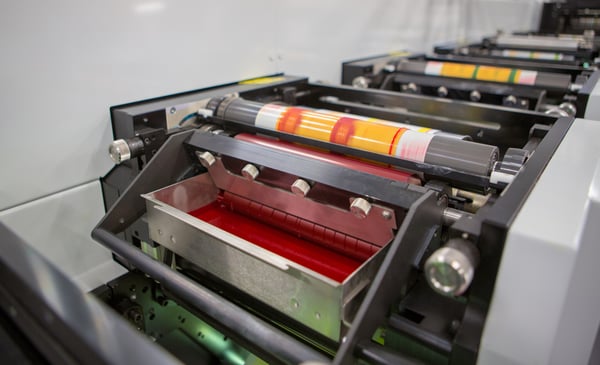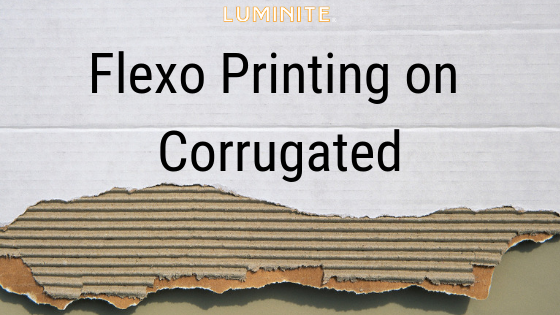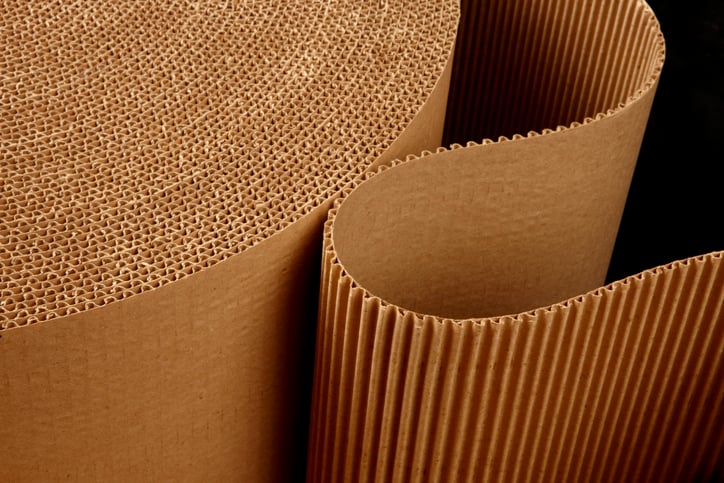How Flexographic Printing Works | A Step-by-Step Guide to Flexography

Flexographic printing is everywhere and has been for decades. You can see examples of it on candy wrappers, candy bags, snack bags, labels, cereal boxes, plastic shampoo bottles, peel-able double-sided medication labels, in your notebooks, legal pads, and desk calendars, and on your seasonal roll of printed paper towels.
Almost everything printed today can be produced flexographically.
It might seem like magic, but the steps to flexo printing are best explained as a carefully choreographed science, yielding a final printed product that is both beautiful and functional.
Easy as 1, 2, 3! How The Flexographic Printing Process Works
Producing these products generally takes 3 steps:
1. ARTWORK
The first step in flexographic printing is designing your artwork. Creating a design that fits the specifications needed to produce the final desired print can be challenging. Failure to thoroughly proof your artwork can result in costly mistakes.
Image carriers cannot be changed once they are produced.
When mounted to a printing cylinder, image carriers created flat stretch and distort your image. You can learn how to calculate and compensate for the distortion -- or opt for In-The-Round, continuous print image carriers that are distortion-free.
2. WEB-FED SUBSTRATE MATERIALS
The rolling design of the flexographic printing press allows for continuous substrate materials (in roll-form) to be fed through the machine.
This feature of flexography is what allows for the continuous printing process that can achieve high speeds, maintain accuracy, and efficiently produce large print runs.
3. THE FLEXOGRAPHIC PRINTING PRESS
- Unwind and Infeed - A roll of the substrate is fed into the printing press. Tension must be kept taught to prevent slack which can cause wrinkling, misregistration, web breaks, and other print defects.
- Enclosed Doctor Blade Inking System - A continuous cycling pump fills the enclosed chamber with ink. The ink is transferred onto the anilox roll with any excess removed by the doctor blade. The ink cycles in and out of the enclosed system during printing. To learn more about the ins and outs of ink, we've created an Ink 101 Guide, too!
- Inking Anilox Roller - The anilox roller contains microscopic cells which carry a thin layer of ink from the inking system to the image carrier. There are 4 main types of inks that you can use - water-based, solvent-based, oil-based, and UV inks. Finding the right ink composition is important for anilox and image carrier material selection.
- Image Carrier and Impression Cylinder - The image carrier transfers the image to the substrate.
The flexographic press pulls the substrate between the image carrier and the impression cylinder. Simultaneously, the impression cylinder holds exactly the right amount of pressure on the substrate for even ink distribution. - Drying - The substrate winds through roller-less and plate-less sections to dry the ink. Depending on the number of colors used, the substrate might pass through multiple image carriers, impression cylinders, and drying sections in a single print run (one per color).
- Outfeed and Rewind - The final step on a flexographic printing press is the outfeed and rewind, where a substrate is rolled up again in preparation for a cutting die, which will separate individual prints.
Partner with the Right Flexographic Printing Image Carrier Manufacturer for Your Materials
Making sure all of these steps run smoothly and defect-free comes down to investing in the proper materials, and partnering with an image carrier manufacturer who can optimize your printing process is a necessary first step.
Image carrier production has evolved beyond a simple flexible printing plate and can offer advanced solutions such as ITR engraving and seamless printing.
If you're just getting started considering flexography, contact Luminite below to learn more about all of your commercial printing options:



